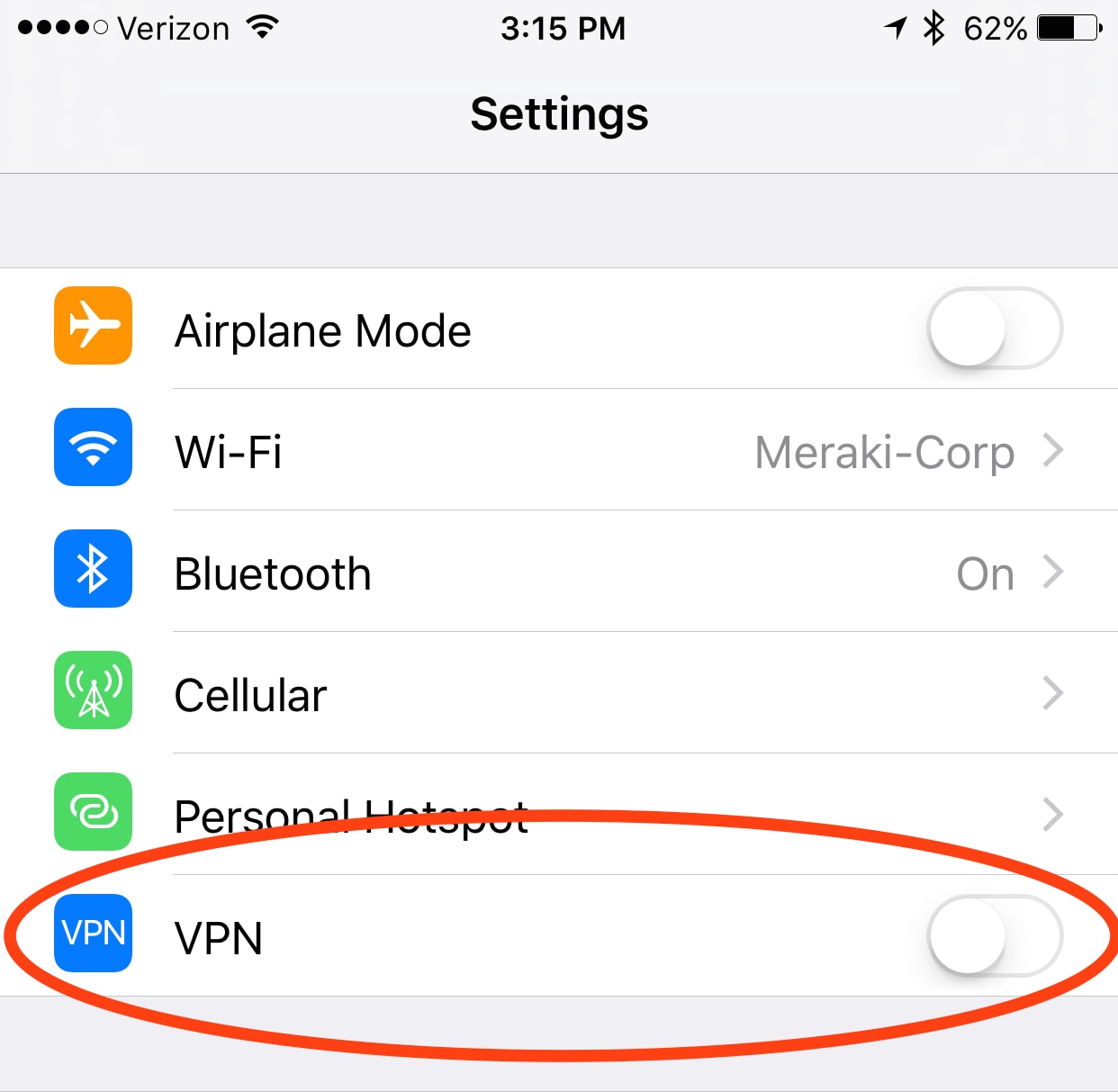Meraki Vpn On Mac
Thank you all for your replies. I can confirm Okta's RADIUS connectors will work to authenticate into Meraki VPN using built in macOS and Windows 10 VPN clients; I've had this exact setup deployed for well over 1/2 a year now (including push). Your guide is excellent Bryan; I trust it'll help many going forward. Learn best practices for setting up Cisco Meraki Client VPN, both local authentication and active directory authentication. By using the built-in Meraki dyna. This guide will show you how to connect to a VPN that supports the L2TP/IPSec protocol on your Apple MAC.Facebook: https://www.facebook.com/ricmedia.pchelpTw.
Currently only the following authentication mechanisms are supported:

When using Meraki hosted authentication, VPN account/user name setting on client devices (e.g., PC or Mac) is the user email address entered in the Dashboard. Open Start Menu Search 'VPN' Click Change virtual private networks (VPN) From the VPN settings page, click Add a VPN connection. In the Add a VPN connection dialog. Try connecting to your Meraki client vpn connection using this utility. Microsoft vendor complaint template. You should have a drop-down list with all your saved connections. Pick one, then enter your user name and password. Does it connect successfully or give you an error, @JustinKing?
- User authentication: Active Directory, RADIUS, or Meraki hosted authentication.
- Machine authentication: Preshared keys (shared secret)
When using Meraki hosted authentication, VPN account/user name setting on client devices (PC/Mac) is the user email address entered in the Dashboard.
1. Open System Preferences -> Network from Mac applications menu. Click the “+” button to create a new service, then select VPN as the interface type, and choose L2TP over IPsec from the pull-down menu.

- Server Address: Enter the public IP address (found in the Dashboard, under Security appliance -> Monitor -> Appliance status -> Uplink)
- Account Name: Enter the account name of the user (based on active directory, RADIUS, or Meraki Hosted authentication)
2. Click Authentication Settings and provide the following information:
- User Authentication -> Password: User password (based on Active Directory, RADIUS, or Meraki Hosted authentication)
- Machine Authentication -> Shared Secret: The preshared key that you’ve created in Configure -> Client VPN settings for the MX.

3. Click OK to go back to the main VPN settings page, then click Advanced and enable the Send all traffic over VPN connection option.
 Caution:
Caution:The VPN connectivity will not be established if you do not enable the Send all traffic over VPN connection option.
Cisco Meraki Client Vpn Setup
Was this article helpful?
Meraki Client Vpn Os Configuration
Related Articles
